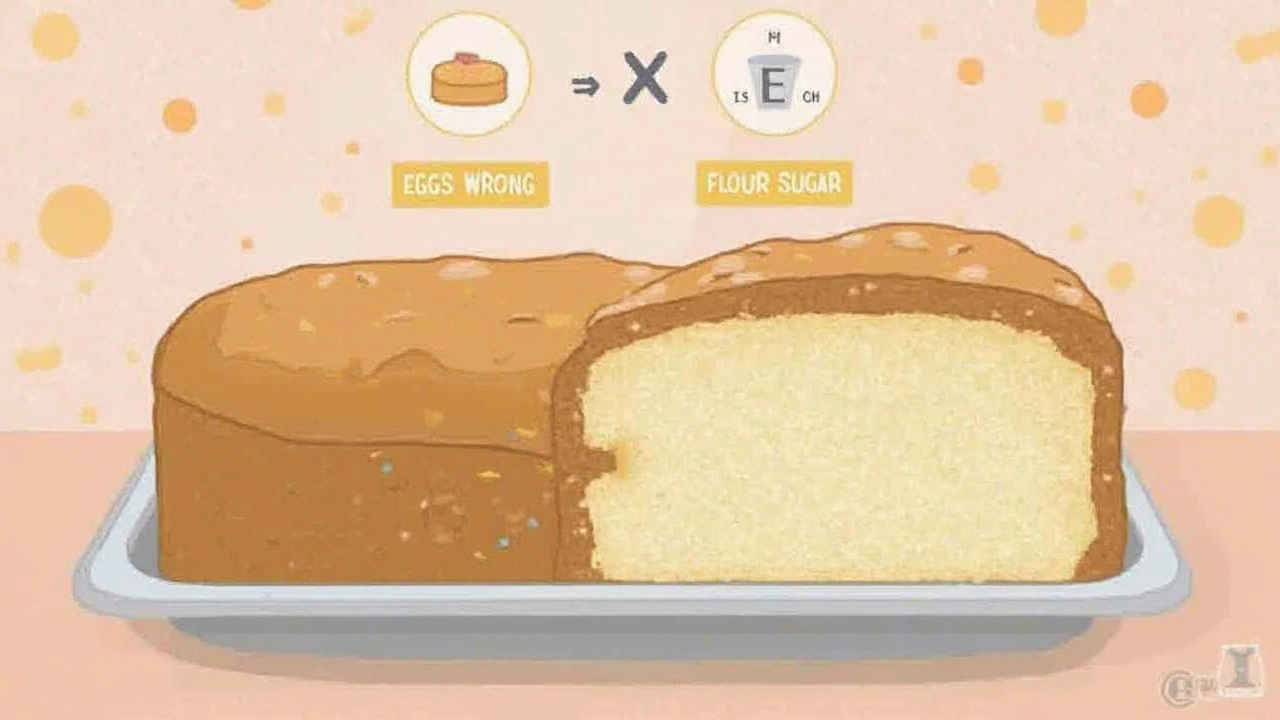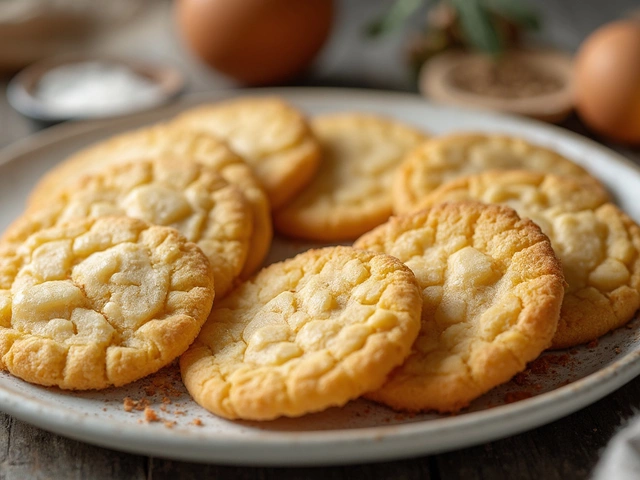
You open the oven door and, ugh, your cake looks like a sunken crater. That dent in the middle can totally ruin your mood—and your dessert plans. So why do cakes sink, and is there an easy fix?
Sinking cake is when your cake caves in the center, either while it’s baking or as it cools. It’s not just a rookie mistake. Even experienced bakers run into this, usually thanks to a tiny misstep along the way—sometimes an innocent one, like opening the oven just a bit too soon.
Before you toss that not-so-perfect cake in frustration, knowing why it happens can save your future bakes. Sometimes it’s just about patience (like not peeking!), and other times it comes down to the recipe or even your baking soda’s age. Understanding the main reasons is the first step toward never seeing that dreaded sunken middle again.
- What Does 'Sinking Cake' Actually Mean?
- The Real Reasons Cakes Sink
- How to Keep Your Cake from Sinking
- Rescue Plan: What to Do When It Happens
What Does 'Sinking Cake' Actually Mean?
Seen a cake with a dip or crater right in the middle? That’s a sinking cake—a classic baking letdown. Instead of an even, proud top, your cake looks like it collapsed in on itself. Some folks call this a "fallen" cake, but whatever the word, the result is the same: a center that’s sunken and dense, while the edges are higher and probably cooked through. This problem pops up most often in sponge cakes, birthday cakes, or any recipe relying on a light, airy texture.
The main sign is pretty hard to miss. Your cake might look okay as it bakes, but once it cools, the center drops lower than the sides. When you slice it, the inner part could be gummy or even raw, while the outer edge is firm. Taste isn’t always ruined, but the look and texture sure take a hit.
Sinking isn’t just cosmetic. That dip shows the cake structure didn’t hold up. Normally, a cake rises, sets, and stays that way as moisture and heat cook it through. If something throws off that balance—like too much leavening or not enough baking time—the top can rise fast and then collapse before the inside is stable enough to support it.
- You might notice this most in layer cakes meant for stacking, where a sunken center can mess up your whole design.
- Cupcakes can sink too—sometimes leaving a well in the middle just big enough to hide a filling (which is actually an upside if you’re creative).
According to a 2023 survey by the Home Bakers Association, around 38% of home bakers say cakes dawning the dreaded dip is one of their top frustrations. Here’s a quick snapshot of what bakers report seeing:
| Issue | % Who Faced It |
|---|---|
| Sinking Cake | 38% |
| Cracked Top | 25% |
| Dry Texture | 22% |
| Undercooked Center | 15% |
To sum up, sinking cake means your cake didn’t keep its lift, turning what could have been a bakery-worthy treat into something that needs a little rescuing. Don’t stress—understanding what went wrong is the first step to making sure your next bake stands tall, literally.
The Real Reasons Cakes Sink
So, why do you end up with a sinking cake instead of a nice, fluffy one? There’s not just one cause, but a bunch of small things that can make your cake collapse. Here’s what really happens behind those cake fails.
- Underbaking: This is the classic culprit. The outside forms a crust, but if the center stays raw, it can’t hold its shape and caves as it cools. Sometimes, even a minute under can make a difference.
- Too Much Leavening: It might sound backwards, but extra baking powder or baking soda doesn’t make your cake taller; it makes it rise too fast and then collapse. A 2022 King Arthur Baking survey showed that over-measuring leaveners is one of the top three causes of home baker fails.
- Opening the Oven Door Too Early: Letting heat escape before the batter has set drops the temperature, so your cake loses its rise—especially in the first 20 minutes. Most ovens can lose up to 50°F in just a few seconds with the door open.
- Wrong Ingredient Amounts: Baking is chemistry, not guesswork. Swapping or eyeballing amounts throws things off, making the structure too weak.
- Overmixing: Beating the batter for too long adds too much air. When that air escapes, you get a sunken middle.
- Outdated Leaveners: Baking powder and soda should fizz when dropped in water. If they don’t, your cake won’t rise at all.
Certain cakes are more likely to sink, too. Extra-moist cakes, like banana bread or carrot cake, and gluten-free recipes can be tricky because their structure is already delicate.
| Reason | Typical Mistake | How to Spot It |
|---|---|---|
| Underbaking | Cake is jiggly, toothpick comes out wet | Dense or batter-like patch in center |
| Too Much Leavening | Extra baking powder/soda | Cake rises too high, then drops suddenly |
| Opened Oven Door | Peeking during first 20 mins | Sudden dip forms as it cools |
| Outdated Leaveners | Using old baking powder/soda | No rise, flat or sunken cake |
If you stick to accurate measurements, check your oven’s temp (use an oven thermometer—many ovens run hot or cold by up to 25°F), and avoid those early peeks, you’ve already dodged most problems that cause a sinking cake. One last thing: never yank the cake out of the oven early, even if it looks golden. Give it a test with a toothpick before you call it done.

How to Keep Your Cake from Sinking
If you’re tired of playing cake rescue, there are some failsafe ways to keep your cake tall and proud. Here’s what actually matters when it comes to stopping a sinking cake—these aren’t just old wives’ tales; they’re proven by science and professional bakers everywhere.
- Follow the recipe to a T. Seems obvious, but even one extra egg or tablespoon of liquid can mess up the balance. Recipes are tested to get the right structure, so resist the urge to tweak unless you know what you’re doing.
- Check your leavening agents. Baking powder and baking soda start losing oomph after about six months. To test if they’re still good, add a little baking powder to hot water or baking soda to vinegar. If it fizzes, you’re good. If not, toss it.
- Use room temperature ingredients. Cold eggs or milk can shock the batter, messing with texture and rise. Let everything sit out for 20-30 minutes before you start mixing.
- Don’t overmix or undermix. Overmixing builds too much gluten, making your cake dense. Undermixing leaves pockets of flour that can weigh the cake down. Mix just until everything’s combined and smooth—think “no dry spots.”
- Resist the urge to open the oven door early. This is huge. Dropping the oven temp too soon is the fastest way to a sunken middle. Wait until the cake’s at least 80% done—generally the last 5-10 minutes of bake time—before you check.
- Check your oven temperature. Ovens can run hot or cold by as much as 20°F. Invest in an oven thermometer and calibrate yours if needed. Proper temp means proper rise.
Here’s a quick look at the most common reasons cakes sink, and what to do about it:
| Problem | How to Prevent |
|---|---|
| Old baking powder/soda | Test freshness & replace if needed |
| Oven door opened early | Wait until cake is mostly baked |
| Wrong ingredient temps | Use room temp butter, eggs, milk |
| Overmixing/undermixing | Mix just until combined |
| Incorrect oven temp | Use an oven thermometer |
If you keep these in check, your next cake is way more likely to come out soft, tall, and not sunken at all. It’s about control—just fix these little things, and you’ll taste the difference.
Rescue Plan: What to Do When It Happens
Okay, so your sinking cake just came out of the oven looking more like a crater than a celebration centerpiece. Don’t panic. There are actually plenty of smart tricks to save your cake—and even make it look intentional or taste just as good.
First, figure out how sunken it is. If you’ve just got a little dip, a quick fix can make it almost invisible. If the whole middle collapsed, you can still turn it into something seriously good (and nobody has to know it was an accident!).
- Level and Frost: If it’s just slightly dipped, grab a serrated knife and trim off the top to make it even. Cover it with frosting, whipped cream, or ganache. No one will ever see the mistake, especially under a thick layer of buttercream.
- Fill It: Got a big sinkhole? Make it a bonus! Scoop out a bit more and add a layer of pudding, jam, fresh fruit, or whipped cream right into the center. It turns into a surprise cake, like a giant cupcake with filling.
- Stack It Up: Cut your cake into cubes and layer them with cream in a trifle dish. Sinking cakes actually work great for trifles—they soak up syrup or liqueur and taste even better the next day.
- Crumble for Cake Pops: Crumble your cake and mix with a bit of frosting to make cake pops or cake truffles. Roll into balls, dip in chocolate, and you have a party snack instead of a baking fail.
And if you want to avoid sunken cakes next time, keep this simple baking checklist in mind:
| Tip | Why It Matters |
|---|---|
| Check oven temp with a thermometer | Home ovens can be 10-20°F off |
| Use fresh baking powder/soda | Old leaveners don’t lift your cake |
| Don’t over-mix or under-mix | Over-mixing toughens, under-mixing leaves lumps |
| Resist opening the oven early | Sudden drops in temp sink cakes fast |
| Measure ingredients with a scale | Way more accurate than cups |
Honestly, almost every baker ends up facing a sunken cake at some point. The trick is to use a little creativity and a few sneaky moves to turn it around. Worst-case scenario? Just call it a pudding or trifle and enjoy—some people even prefer it this way!





